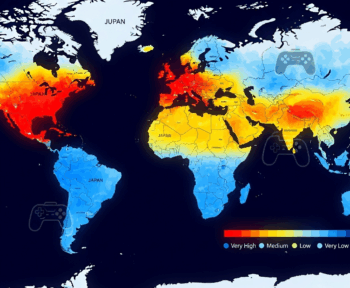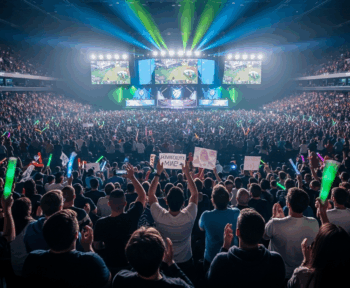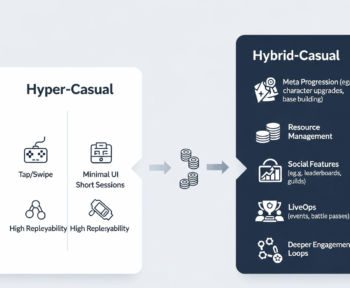The intersection of sophisticated psychological principles and game design has created experiences that command unprecedented levels of player engagement. While the vast majority of players maintain healthy gaming relationships, understanding the psychological mechanisms that drive both positive engagement and potential addiction has become crucial for developers, players, and society.
The Neuroscience of Gaming Engagement
Gaming activates the brain’s reward system through carefully calibrated dopamine release patterns. Each achievement, level completion, or rare item acquisition triggers dopamine release similar to other pleasurable activities. However, unlike natural rewards that diminish with repetition, games can maintain consistent dopamine responses through variable reward schedules and escalating challenges.
The anterior cingulate cortex, responsible for attention and emotion regulation, shows heightened activity during gaming. This activation explains gaming’s ability to create flow states where players lose track of time and external stimuli. These flow states, while generally positive, can contribute to excessive play when other responsibilities are neglected.
Neuroplasticity research reveals that intensive gaming physically alters brain structure. Regular gamers show increased gray matter in regions associated with spatial navigation, strategic planning, and fine motor skills. However, excessive gaming correlates with reduced gray matter in the anterior cingulate cortex, potentially impacting impulse control and emotional regulation.
Behavioral Psychology in Game Design
Variable ratio reinforcement schedules, borrowed from casino gambling, create powerful engagement loops in modern games. Loot boxes, random drops, and gacha mechanics exploit this psychological principle where rewards come at unpredictable intervals. This uncertainty generates stronger engagement than predictable rewards, as players never know when the next reward will appear.
The sunk cost fallacy keeps players engaged long after enjoyment diminishes. Having invested time, money, or effort into a game, players feel compelled to continue rather than “waste” their investment. Battle passes and limited-time events weaponize this psychology by creating fear of missing out (FOMO) on exclusive rewards.
Social proof mechanisms leverage humanity’s tribal psychology to drive engagement. Leaderboards, achievement comparisons, and social media integration create pressure to keep pace with peers. Multiplayer games particularly exploit social dynamics, with team obligations and social relationships creating powerful retention mechanics beyond individual enjoyment.
The Addiction Classification Debate
The World Health Organization’s recognition of “Gaming Disorder” in 2019 legitimized gaming addiction as a mental health condition. The diagnosis requires significant impairment in personal, family, social, educational, or occupational functioning for at least 12 months. However, prevalence estimates vary wildly from 0.3% to 15% depending on diagnostic criteria and populations studied.
Critics argue that gaming addiction pathologizes normal behavior and ignores positive gaming aspects. They point out that excessive engagement with any activity—work, exercise, reading—can be problematic without constituting addiction. The lack of physical dependency distinguishes behavioral addictions from substance addictions, though psychological dependencies can be equally destructive.
The diagnostic criteria for gaming disorder remain controversial within the medical community. Some researchers argue that gaming problems are symptoms of underlying conditions like depression or anxiety rather than distinct disorders. This chicken-and-egg problem complicates treatment approaches and research into gaming’s psychological impacts.
Demographic Vulnerabilities and Risk Factors
Adolescents face particular vulnerability to problematic gaming due to ongoing brain development. The prefrontal cortex, responsible for impulse control and decision-making, doesn’t fully mature until the mid-twenties. This developmental gap means teenagers have adult-level reward sensitivity without corresponding control mechanisms, making them susceptible to gaming’s psychological hooks.
Certain personality traits correlate with increased risk of gaming problems. High neuroticism, low conscientiousness, and introversion predict problematic gaming behavior. Individuals with ADHD show higher rates of gaming addiction, possibly using games for stimulation and focus that their brains struggle to maintain naturally.
Life circumstances significantly influence gaming addiction risk. Social isolation, unemployment, and relationship problems can drive excessive gaming as escapism. The COVID-19 pandemic demonstrated this relationship, with gaming addiction referrals increasing 50-100% during lockdowns. Gaming provides predictable rewards and social connection when real-world sources become unavailable.
Modern Monetization Psychology
Free-to-play models exploit psychological biases to convert players into payers. The initial free experience creates commitment and investment before introducing friction that spending can alleviate. This “foot-in-the-door” technique makes eventual spending feel like a small step rather than a significant decision.
Anchoring bias in pricing makes expensive items seem reasonable by comparison. A $99.99 currency bundle makes $19.99 seem affordable, even though it represents significant spending for a video game. Limited-time offers create artificial scarcity that triggers loss aversion, compelling purchases players might otherwise skip.
Pay-to-win mechanics exploit competitive psychology and social comparison. Players spend not for intrinsic enjoyment but to maintain status or competitive viability. This creates arms races where spending becomes necessary to maintain previous enjoyment levels, resembling tolerance in substance addiction.
The Dark Patterns Playbook
Dark patterns in gaming deliberately obscure true costs and manipulate player behavior. Intermediate currencies disconnect spending from real money value. Complex progression systems hide whether spending provides meaningful advancement. These obfuscation techniques prevent informed decision-making about time and money investment.
Appointment mechanics require players to log in at specific times or lose progress. Daily bonuses, energy systems, and timed events create obligation rather than desire to play. Missing these appointments triggers loss aversion and guilt, driving compulsive checking behaviors that resemble behavioral addictions.
Endowed progress gives players advancement toward goals they didn’t choose, creating artificial investment. Starting players with partially completed collections or providing “free” progress toward paid goals generates commitment to finishing what was started. This technique exploits the human desire for completion even when the goal itself holds no intrinsic value.
Positive Psychology and Gaming Benefits
Despite addiction concerns, gaming provides significant psychological benefits for most players. Games offer safe spaces for experimentation with identity, decision-making, and social interaction. The ability to fail without real consequences builds resilience and problem-solving skills transferable to real-world challenges.
Gaming communities provide social support and belonging for individuals who struggle with traditional social interaction. Online friendships formed through gaming can be as meaningful as offline relationships, particularly for individuals with social anxiety or mobility limitations. These connections combat isolation and depression more effectively than passive entertainment.
Achievement and mastery in games build self-efficacy that translates to real-world confidence. Overcoming difficult challenges, whether solo or cooperatively, creates genuine pride and accomplishment. For individuals struggling in other life areas, gaming achievements provide important psychological sustenance.
Therapeutic Applications and Serious Games
Mental health professionals increasingly incorporate gaming into treatment protocols. Games designed for therapy address anxiety, depression, and PTSD through controlled exposure and skill building. Virtual reality therapy for phobias uses gaming technology to create safe, controlled treatment environments.
Cognitive training games show promise for maintaining mental acuity and potentially slowing cognitive decline. While early claims were overblown, refined approaches demonstrate specific benefits for attention, processing speed, and working memory. The engaging nature of games improves compliance compared to traditional cognitive exercises.
Biofeedback games teach emotional regulation by connecting physiological monitoring to gameplay. Players learn to control heart rate, breathing, and muscle tension to succeed in games, developing skills applicable to anxiety management. This gamification of therapy makes treatment more engaging and effective for many patients.
Parental Concerns and Youth Protection
Parents face challenging decisions about children’s gaming in environments designed to maximize engagement. Screen time recommendations from health organizations often conflict with social realities where gaming represents primary peer interaction. Strict prohibition can lead to social isolation while unlimited access risks problematic behavior.
Parental control tools have evolved beyond simple time limits to include spending controls, content filtering, and activity monitoring. However, technical solutions cannot replace parental engagement and communication about healthy gaming habits. Children need guidance navigating gaming’s psychological manipulation techniques.
Educational initiatives teaching critical thinking about game design and monetization prove more effective than prohibition. When children understand how games manipulate psychology, they develop resistance to exploitation. This media literacy approach empowers rather than restricts, preparing youth for lifelong interaction with persuasive technologies.
Industry Responsibility and Ethical Design
The gaming industry faces increasing pressure to acknowledge and address addiction risks. Some companies implement spending limits, reality checks, and self-exclusion options. However, these measures often seem token gestures rather than genuine commitment to player welfare, implemented minimally to avoid regulation.
Ethical game design prioritizes player wellbeing alongside engagement. This includes transparent monetization, respect for player time, and mechanics that encourage healthy play patterns. Games can be engaging without being exploitative, though this requires rejecting some profitable but harmful practices.
Industry self-regulation through bodies like the Entertainment Software Rating Board (ESRB) attempts to forestall government intervention. However, the industry’s financial dependence on engagement-maximizing mechanics creates conflicts of interest that undermine self-regulation effectiveness.
Regulatory Responses and Future Directions
Governments worldwide are implementing regulations addressing gaming’s psychological impacts. Belgium and the Netherlands banned certain loot box implementations as illegal gambling. China restricts gaming hours for minors and requires real-name registration. These varied approaches reflect different cultural attitudes toward gaming and regulation.
Age verification and spending limits represent common regulatory approaches. However, implementation challenges and easy circumvention limit effectiveness. Regulations focusing on design practices rather than player restrictions might prove more effective but face industry resistance.
The future likely involves continued tension between engagement-driven design and player protection. As understanding of gaming psychology improves, both exploitation techniques and protective measures will sophisticate. The challenge lies in preserving gaming’s benefits while mitigating its risks, requiring collaboration between industry, researchers, regulators, and players themselves.





